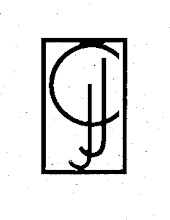The first book I notic
 ed was The Art of Spelling: The Madness and the Method by Marilyn vos Savant. Next was The Professor and the Madman: A Tale of Murder, Insanity, and the Making of the Oxford English Dictionary by Simon Winchester.
ed was The Art of Spelling: The Madness and the Method by Marilyn vos Savant. Next was The Professor and the Madman: A Tale of Murder, Insanity, and the Making of the Oxford English Dictionary by Simon Winchester.I chuckled. Obviously, the words madness and madman in their titles had clinched their position in the display. I was happy to see a couple of language-related books in the mix.
Other books were either sports- or horror-related, except one: William Styron’s seminal work on depression, Darkness Visible: A Memoir of Madness. Who would put such a serious read on such a delicate topic in the middle of a tongue-in-cheek exhibit? It seemed so wrong, so inappropriate.
So I rescued it. I swept Styron off the easel and considered reshelving him. Then it occurred to me that though Darkness Visible had been referenced and excerpted in much of my reading over the years, I’d never actually read it. So I checked it out.
Darkness Visible opened the doors to a taboo subject in the last century and a new genre of memoir. Since its publication, battles with depression have been divulged by many and illuminated well by a few. If you’re looking for a good book on this dark subject, there are lots to choose from now—though none as slim, perhaps, as Darkness Visible.
I switch-read between Styron and A Small Furry Prayer, whose author, Steven Kotler, excerpted Styron’s descriptive powers to explain the deep funk that had befallen Kotler after his loss of seven or more dogs. Suddenly I was reading Styron in two books. My book choices were growing ever more connected. (Another connection between the two: Styron wrote Sophie’s Choice, which is the term rescuers use when choosing a single shelter animal—destined for death—and commit it to their care. My own pooch was a Sophie’s Choice.)

I thought again about the March Madness display. Of course, in my initial overreaction, I had missed the fact that madness is in the subtitle of Styron’s work. But I also missed its similarity to the language books. Libraries, like grocery stores and retailers, use endcaps to push product—in this case, reading. College basketball was only the hook, but once reeled in, library members had an array of choices on that tiered table. And librarians made certain that the array included books that might go unnoticed or ignored by readers who rarely strayed from their preferred genres. Kind of like slipping a few pieces of nutritious broccoli alongside that grilled shrimp you know your kids adore.
The Professor and the Madman had tapped my memory because I’d read it years ago. The Art of Spelling had caught my eye because I know someone who’s working on her GED; the book might be useful to her. As could the Styron book for someone else, someone who may not realize a book exists that clearly expresses the chokehold they feel and try to hide. This was the librarian’s intent.
Geez. I realize now that I didn’t rescue anything. But if I race Darkness Visible back to the library, maybe Styron can.
[Drawing by Albrecht Dürer.]



No comments:
Post a Comment